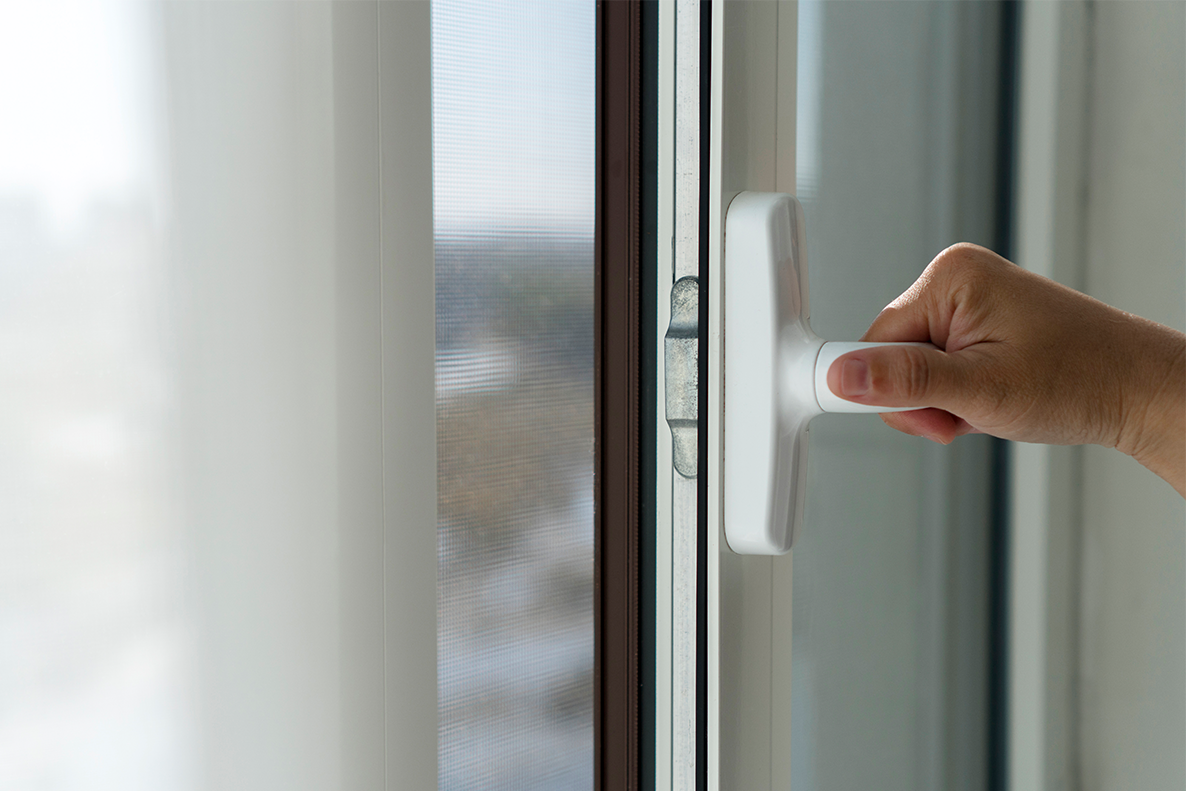With the realisation that many schools across Europe lack sufficient ventilation equipment to provide the air exchange rates needed to for a reasonable level of virus spread prevention, we have seen emergency recommendations for increased windows opening to handle the problem. This directly affects millions of pupils and teachers, and indirectly their headmasters and facility managers. So, we need to ask ourselves how this affect the people inside each classroom, and to what extent window opening is an efficient measure?
In answering this question, we can learn a great deal from existing scientific research. You could also divide the answer in two parts, to make it easier to understand – ventilation to limit the spread of virus, and the effectiveness of window opening as a countermeasure.
Ventilation to combat the pandemic
First, we take the pandemic view. Ventilation is an important factor in mitigating the risk of aerosol transmission. The importance of aerosol transmission in the context of the current pandemic is not yet fully known, but evidence point in the direction that it is a risk in poorly ventilated spaces. Aerosol transmission depends on the interaction of multiple factors such as virus emission rate, ventilation rate, duration of exposure and the number of occupants in the area. It is recommended that the ventilation strategy should at least achieve the equivalent minimum ventilation rate for the space over the occupancy period as defined in national standards. Ventilation should also be balanced against other factors, e.g. thermal comfort.
In poorly ventilated buildings, strategies such as intermittent airing and partial window opening have been suggested to secure that the ventilation rate is achieved. The problem occurs now when we are approaching the cold season in Europe. We are at the moment seeing headlines about teachers threatening to strike because of loss of thermal comfort in schools. Children are recommended to wear their ski outfits to be able to stay in the classroom. For sure we need to ventilate, there is no doubt about that, but we need also to secure that other aspects such as thermal comfort is not significantly compromised.

The effectiveness of window opening
The second view of this topic is also relevant. Will the solution of ventilation by window opening solve the problem with insufficient air exchange in the room?
With opening of windows to solve bad or none-existent ventilation you will achieve some gain in air exchange, so it’s logical as an emergency measure. It’s better than nothing, but it is hardly enough.
Based on the scientific research we can see that in practise, window opening will only give an air exchange rate of approximately 2 litre per second per person. This is due to the physical limitations of window opening itself, combined with behavioural factors – for comfort reasons pupils and teachers will naturally minimize the amount of open window time when it’s cold outside. This means that the air exchange rate falls far below the level set by most national standards, and in that sense also far below the recommendations for reducing virus spread. It’s worth noting that a modern mechanical ventilation system easily provides several times that amount and can maintain the required levels.
But this is not all. We know from many studies that the performance of students in classrooms are heavily depending on the indoor conditions. Of course, a professional and inspiring teacher also affects the learning curve, but a healthy and well-managed indoor climate will help that teacher to optimize the result. Studies show that if we increase the air exchange in a classroom from 1 litre per second per person to 8 litre per second per person, we will increase the learning potential significantly, with cognitive functions such as word recognition improving by up to 15%. Conversely, a poorly ventilated classroom could ruin the possibility for the teacher and the students to perform at their best. Bad indoor air quality, expressed in terms of heightened concentration of carbon dioxide, even with a rather modest increase by 1 000 ppm, could be linked to increased pupil absence with as much as 10-20%.
Conclusion
For the moment we need to stay healthy and minimize the risk of being affected by the pandemic. But the solution of opening window will only help partially, we need controlled modern ventilation in schools that ensure good indoor climate in terms of air quality, thermal comfort and safe conditions. Now is the time to realize that we need to prioritize differently. We need to build differently and we need to renovate a large part of our building stock, which is the daily workplace for our children and their teachers. By doing that we will achieve healthy and productive environments, and at the same time we can also make important contributions in reducing the energy consumption of the buildings.
In the end, our children and everyone caring for them and their education have every right to feel good inside.





-Aug-16-2023-12-30-41-3641-PM.png?width=75&name=MicrosoftTeams-image%20(3)-Aug-16-2023-12-30-41-3641-PM.png)






.jpg?width=75&name=sigvardsson_220628_0008_small_webb%20(1).jpg)












.jpg?width=75&name=magnus%20andersson_550x550%20(1).jpg)











-4.png?width=75&name=MicrosoftTeams-image%20(3)-4.png)











